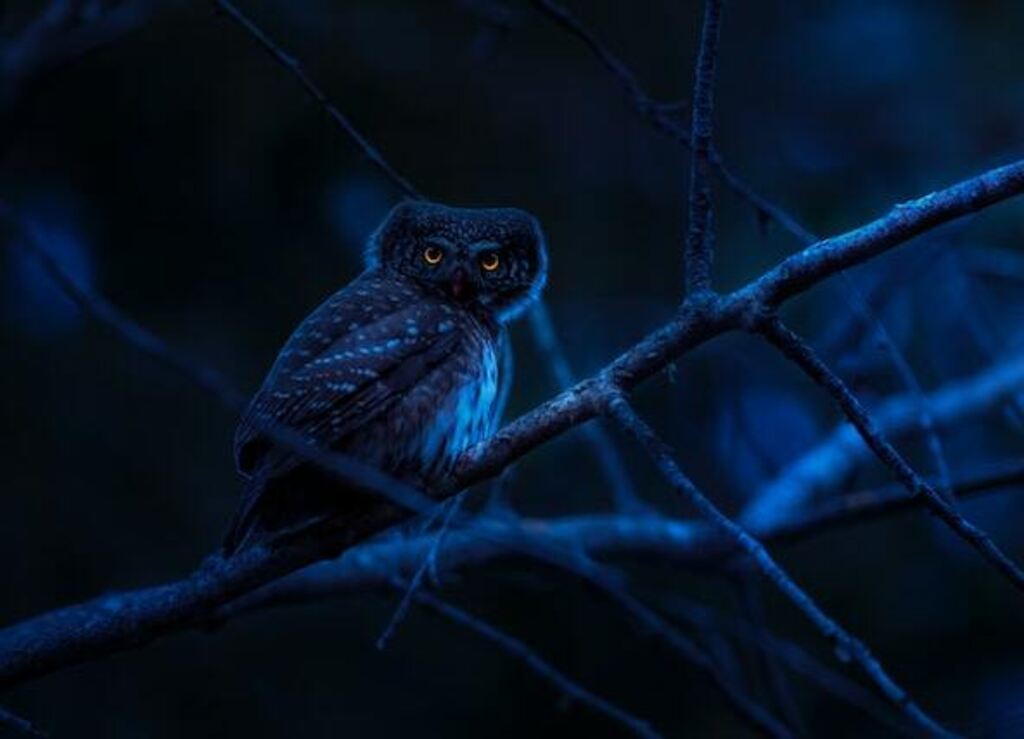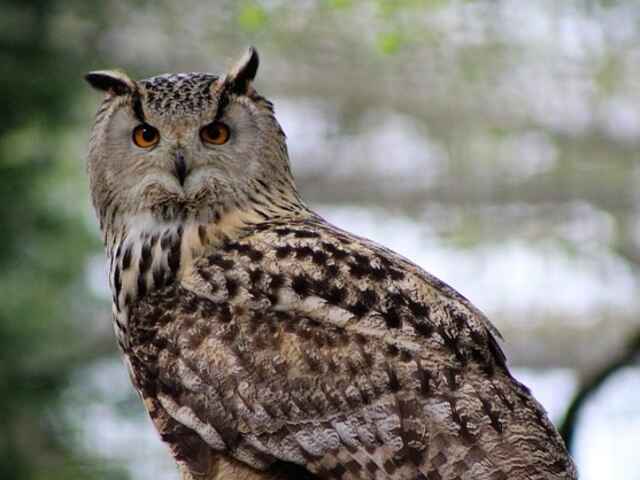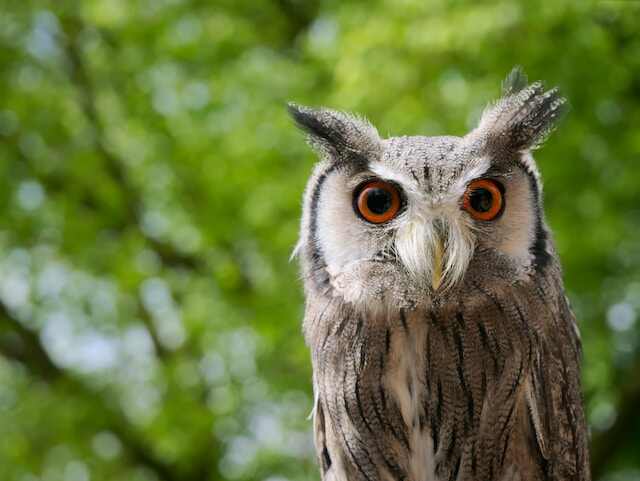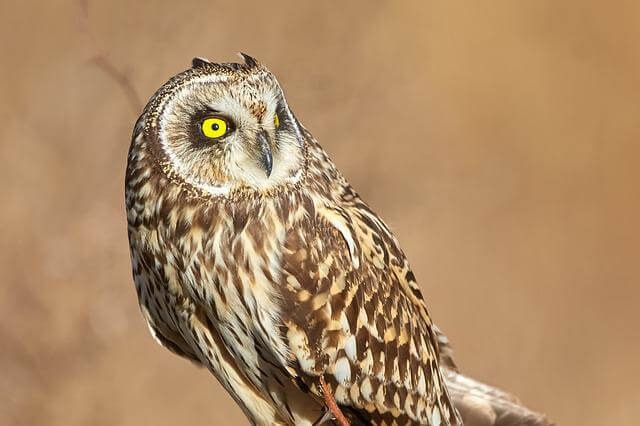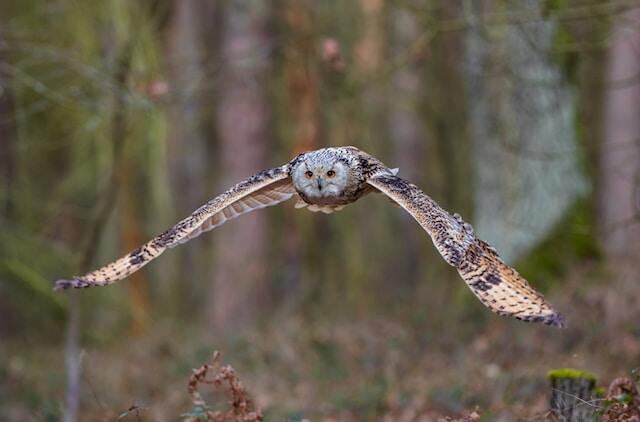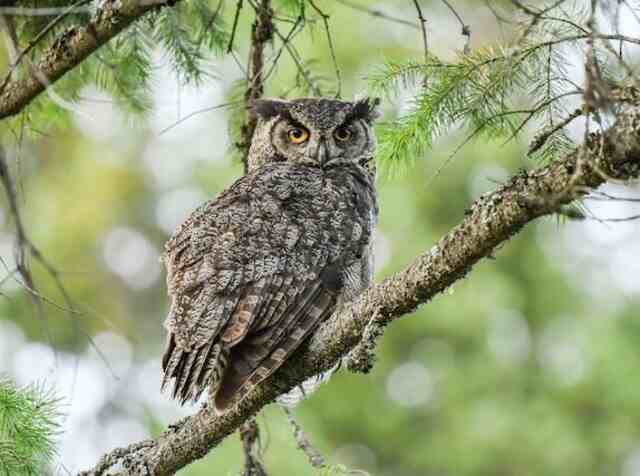Owls have long been admired for their ability to thrive in the dark, often seen as the ultimate night hunters. But do they really have night vision? The answer may surprise you! Join us as we explore the fascinating world of owl eyesight and uncover the incredible adaptations that make these nocturnal birds so remarkable. Prepare to challenge your assumptions and discover what truly sets owls apart in the animal kingdom.
Table of Contents
The Nighttime Watchers: Owls and their Visual Abilities
Owls are fascinating creatures, often associated with wisdom, mystery, and the night. They belong to the order Strigiformes, a group of birds that includes around 250 species worldwide.
While each species has its own unique characteristics, all owls share certain traits that set them apart from other birds. One of the most noticeable aspects of owls is their appearance.
They have large heads and eyes that face forward, giving them binocular vision similar to humans. Their eyes are surrounded by a disk-like structure called a facial disc, which helps to funnel sound towards their ears.
With this combination of sight and hearing abilities, they are excellent hunters even in complete darkness. Despite their reputation for having exceptional night vision, is it really true?
Many people believe that owls can see perfectly in the dark without any light source at all. However, the truth is somewhat more complex than this simple myth.
The Unique Characteristics of Owls
One of the most striking features of owls is their silent flight. Unlike most birds whose wings make noise when flapping in flight, owl feathers have soft edges that greatly reduce noise while flying. This allows them to approach prey without being heard.
Another unique characteristic of owls is their ability to rotate their heads up to 270 degrees due to an unusually flexible neck joint. This allows them to scan their surroundings with greater accuracy and range than other birds.
The shape and size of owl eyes differ from those of many other animals due to adaptations for nocturnal hunting. Their large eyes gather more light than smaller eyes would in low-light conditions which makes it possible for owl’s improved night vision even with little ambient light present
Understanding Night Vision
Explanation of how night vision works in animals
Have you ever wondered how animals like owls can see perfectly fine in the dark? It all comes down to the structure of their eyes.
Animals that have night vision, such as owls, have a larger number of rods in their eyes than humans. Rods are photoreceptor cells that are responsible for detecting light levels and allowing us to see in low-light conditions.
The more rods an animal has, the better they can see in the dark. Another key factor is a part of the eye called the tapetum lucidum.
This is a reflective layer behind the retina that reflects any light that wasn’t initially absorbed by the photoreceptor cells back through them again. This allows animals to effectively double up on any available light and can give them very good night vision.
How Night Vision Works in Owls:
| Aspect | Explanation |
|---|---|
| Rods | Photoreceptor cells responsible for detecting light levels. Owls have a larger number of rods in their eyes than humans. |
| Tapetum lucidum | Reflective layer behind the retina that reflects any light not initially absorbed by photoreceptor cells back through them again. |
| Benefit of tapetum lucidum | Allows animals to effectively double up on any available light and can give them very good night vision. |
| Comparative ability to see at night | Owls can see objects even when there’s only 1/100th of the amount of light required for humans to do so. |
Comparison of human night vision to animal night vision
It’s important to note that while humans don’t have true “night vision” like some animals do, we still have some ability to see in low-light conditions. In fact, our eyes actually adjust to low-light environments by dilating our pupils and increasing sensitivity to light.
However, even with these adaptations, humans simply cannot compete with animals like owls when it comes to seeing at night.
Due to their larger number of rods and highly reflective tapetum lucidum, owls can see objects even when there’s only 1/100th of the amount of light required for us humans to do so!
So next time you’re walking around at night and struggling to make out your surroundings, just remember – there are creatures out there who would be able to navigate with ease!
Comparison of Human and Owl Night Vision:
| Aspect | Human Night Vision | Owl Night Vision |
|---|---|---|
| Photoreceptor cells responsible for detecting light levels | Cones and rods | Mostly rods |
| Number of rods in the eyes | 200,000 per sq. mm. | 1,000,000 per sq. mm. |
| Reflective layer behind the retina | Absent | Present (Tapetum lucidum) |
| Ability to see in low-light conditions | Present, but limited | Exceptional |
| Amount of light required to see objects | Higher | 1/100th of the amount required for humans |
Owl Eyesight: A Masterclass in Hunting at Night
If owls were humans, they would have been the ultimate spies of the night world. Their eyes are like miniature telescopes with impressive capabilities that allow them to see in total darkness.
The size and structure of their eyes are well-suited for nocturnal hunting, and they have some unique adaptations that help them achieve their goals.
When you look at an owl’s eye, the first thing you notice is its size. The eyes are huge compared to the size of their head, giving them a wide range of vision.
An owl’s eyes are also fixed in place; they cannot move around like our own because they are shaped like tubes rather than spheres. The shape and structure of an owl’s eye helps it see in the dark.
Unlike human eyes, which have one lens to focus light on the retina, an owl has two lenses that work together to create a clear image.
These lenses also allow more light to enter the eye, which is essential for seeing in low light conditions. In addition, owls have a higher concentration of rod cells than humans do; these cells detect light levels and help us see in dim lighting conditions.
Another unique adaptation found in owl’s eyes is its tapetum lucidum – a reflective layer behind the retina that bounces back any light that enters again through it – increasing their visual sensitivity by a factor of two or three!
This layer acts like a mirror reflecting any available ambient light onto Photoreceptor cells, increasing brightness in low-light conditions.
Overall, Owl eyesight is truly remarkable for accomplishing what most animals can’t do – hunt efficiently at nighttime when most other animals remain blindfolded!
Adaptations for Night Hunting
Owls are fascinating creatures with unique abilities. They have evolved to become successful nocturnal hunters, with adaptations that allow them to hunt in the dark. These adaptations include everything from their physical attributes to their hunting techniques.
Discussion on how owls hunt at night
When it comes to hunting at night, owls have adapted in several ways. They rely on their excellent eyesight and hearing abilities to locate prey. They also have silent flight, which makes them virtually undetectable by prey when they swoop down for the kill.
Owls are also known for their ability to turn their heads 270 degrees, which allows them to spot prey even while perched or in flight. In addition, they have sharp talons and beaks that enable them to capture and kill prey quickly and efficiently.
Explanation of adaptations that help them hunt in the dark
One of the main reasons why owls are so good at hunting in the dark is because of their exceptional eyesight. Their eyes are large and forward-facing, providing binocular vision that allows them to judge distances accurately.
They also have a high concentration of rod cells in their retinas, which enables them to see better in low light conditions.
In addition to great eyesight, owls have fluffy feathers that muffle sound when they fly. This makes it easier for them to surprise prey without being detected.
Their wings are also specially designed with serrated edges that help reduce turbulence as they fly through the air. Overall, these adaptations make owls one of nature’s most effective predators.
Their specialized features allow them to thrive in environments where most other animals would struggle or fail altogether. It’s truly remarkable how evolution has shaped these incredible creatures into masterful hunters of the night!
Owl Vision Myths
Debunking Common Myths About Owl’s Vision, Such as Seeing Through Walls or Having X-Ray Vision
Owls have always been fascinating creatures to humans and have long been associated with mystery and magic. Unfortunately, this has led to many myths surrounding their abilities. One of the most common myths is that owls can see through walls or have x-ray vision.
In reality, this is simply not true. While it’s true that owls have incredible night vision, they cannot see through solid objects like walls. This myth likely originated from the fact that owls are able to hunt in complete darkness by using their exceptional hearing to locate prey and then swooping in for the kill.
However, it’s important to note that they do not rely on any supernatural abilities. Another popular myth about owl vision is that they only see in black and white. This is also untrue, as owls are able to see a range of colors just like humans can.
However, their color perception may be slightly different due to variations in their eye structure and the types of cones (color receptors) present in their retinas. There’s a belief that an owl turning its head all the way around means it has 360-degree vision.
This is not accurate either – while owls are able to turn their heads much further than humans can (up to 270 degrees), they still have a blind spot directly behind them where they cannot see at all.
Overall, while owls do possess amazing visual capabilities compared to many other animals, these capacities are grounded firmly in natural biology rather than any sort of supernatural power or mythology.
Conclusion
Recap of key points about owl’s night vision
Owls have exceptional night vision that allows them to hunt in complete darkness. Their eyes are specially adapted to gather as much light as possible, and their brains are wired in a way that allows them to process visual information quickly and accurately.
Contrary to popular belief, however, owls do not have “night vision” in the sense that they can see perfectly in complete darkness. They still rely on some ambient light sources, such as the moon or stars, to navigate and hunt.
Final thoughts on the amazing abilities of these nocturnal creatures
Owls are truly remarkable creatures with a unique set of adaptations that allow them to thrive at night. Their eyesight alone is a marvel of evolution, but they also have incredible hearing and silent flight, which aid them in hunting prey with deadly precision.
It’s no wonder they have been revered in many cultures as symbols of wisdom and mystery. But beyond their physical abilities, owls also play important ecological roles by controlling populations of rodents and other prey species.
Without owls, these populations would grow unchecked and could cause serious damage to ecosystems. So next time you hear the hoot of an owl at night or catch a glimpse of one swooping through the trees, take a moment to appreciate these amazing creatures for all they do for our world.
FAQs: Do Owls Have Night Vision?
How good is an owl’s night vision?
Owls have incredible night vision, allowing them to see in near-total darkness. Their eyes are designed to gather and process as much light as possible, which enhances their ability to see in low light conditions.
How far can owls see at night?
Owls can see up to 100 feet in complete darkness, thanks to their large eyes and specialized vision adaptations. Some owl species, like the Barn Owl, have even been known to hunt prey in complete darkness using their exceptional night vision.
What animal has the best night vision?
Many animals have exceptional night vision, but the title for the best goes to the aye-aye, a type of lemur found in Madagascar. Their large eyes and special adaptations allow them to see in the dark with incredible clarity and precision.
What is the vision of an owl?
Owls have exceptional vision, particularly in low light conditions. They have large eyes that take up a significant portion of their head, allowing them to gather and process as much light as possible. Additionally, their eyes are packed with light-sensitive cells that enhance their night vision.
Which bird has the best night vision?
While many bird species have good night vision, the owl reigns supreme in this category. Their unique adaptations, including large eyes and specialized light-sensitive cells, give them an exceptional ability to see in the dark.

